Toyo Ito
Having worked for Kikutake Architects (the firm of Kiyonori Kikutake, a key figure in Japan's avant-garde Metabolist movement), Toyo Ito then established his own office (Toyo Ito & Associates). Pursuing soft, translucent designs, his vision is best expressed in the Sendai Mediatheque (Miyagi, Japan), the TOD's OMOTESANDO Building (Tokyo) and the Cognac-Jay Hospital (Paris). Combining the column-andcrossbeam structure that is part of the Japanese tradition and the basis of modernist architecture with "floating" tube-steel lattice columns, his structures have won critical acclaim.
|
|
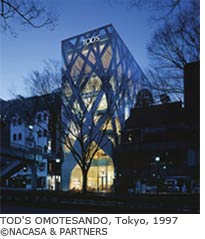
|
Tadao Ando
Tadao Ando is an indomitable figure. Lacking formal training, he began making designs while working as a boxer. He went on to establish a successful practice and to teach architecture at the University of Tokyo. Fusing walls and the concrete that is modern architecture's basic element with
Japanese architecture, his structures can be seen in many countries. In Japan, his Naoshima Contemporary Art Museum complex (Naoshima Island, Kagawa, Japan) and Omotesando Hills (Tokyo) attract many visitors. Invoking traditional Japanese architectural methods in contemporary guise, Tadao Ando is now one of Japan's leading architects, succeeding Kenzo Tange.
|
|
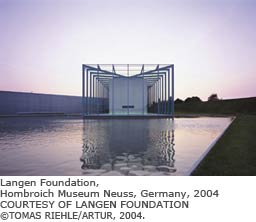
|
Shigeru Ban
Cosmopolitan Shigeru Ban studied his art in New York. Using environment friendly recycled
cardboard paper tubes, his innovative designs for relief housing for victims of the 1995 Great Hanshin Earthquake and for the UNHCR (the UN Refugee Agency) were acclaimed for harmonising with 21st-century concerns. He has since enhanced his reputation with structures such as the Centre Pompidou-Metz (France) and the Nomadic Museum (New York). His work shows the path Japanese architecture needs to take as it reaches out to the world.
|
|
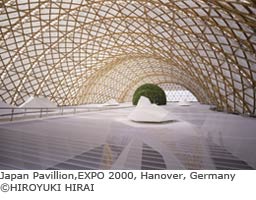
|
Kazuyo Sejima + Ryue Nishizawa / SANAA
Formerly with Toyo Ito & Associates, SANAA principal Kazuyo Sejima combines traditional and modern aspects of Japanese architecture. Her recent designs such as the 21st Century Museum of Contemporary Art (Kanazawa, Japan), Onishi Hall (Gunma, Japan) and Bairin no Ie (Plum Grove House, Tokyo) achieve the limits of freedom and translucency for which architecture strives. Kazuyo Sejima and her young colleague Ryue Nishizawa are seen as important figures in the future of Japanese architecture.Cosmopolitan Shigeru Ban studied his art in New York. Using environment friendly recycled
|
|
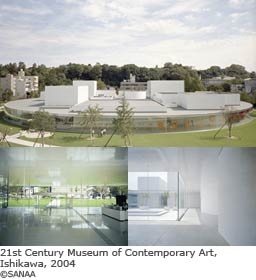
|
Jun Aoki
Jun Aoki is the leading exponent of the practical fusion of avant-garde with commercial architecture. Although his predecessors (Toyo Ito, Tadao Ando) created wonderful commercial structures, Jun Aoki's designs brought modernist expression into commercial architecture from the outset. His Louis
Vuitton stores in New York and Tokyo's Omotesando district showed contemporary Japanese architecture can design structures in all genres. His Aomori Museum of Art (Aomori, Japan) offers
a vision of how the architecture of the future should be expressed in public structures.
|
|
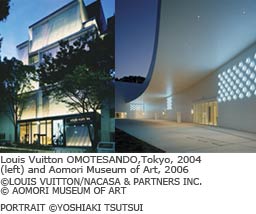
|
Copyright 2007 - Ministry of Foreign Affairs, Japan |
|
|
 |
 |
 |

